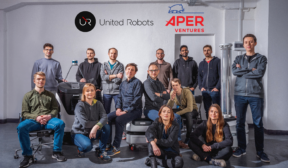“How do we know that our environment is ready to implement the robot in?”
“How do we integrate the cleaning robot with other robots?”
“Which task can be left to the robot?”
“How do we make sure that robot always stops when its needed?”
“How do we set up the robot to use the needed amount of water and detergents within each space?”
…and many more questions- we hear them a lot. And we found them relevant and take them seriously. In today’s fast-paced industrial landscape, it’s crucial for every part of the factory or warehouse to work without any disturbance and at full steam. Every delay counts in money. That is why any business mature robot supplier (like United Robots) has a team of dedicated professionals who will support and lead you through a complex process of determining the needs and limitations of the space and then deploying the robots.
Here are the areas that are covered by the United Robot’s development team:
ANALYSIS OF APPLICABILITY – EXPERTS’ VISIT TO THE FACILITY
Companies maximize the benefits only by allocating the right resources in the right places for the right tasks. The first thing to consider when automating the cleaning process is whether your space is ready for the robot. And if the answer is yes – if there are any areas that would require adjustments or improvements in order to optimize robot’s performance. And that is exactly what deployment and presales teams do – examining your business needs and checking whether your goals can be achieved by introducing a robot into the facility. This step includes:
Determining the characteristics of the environment:
- Spatial considerations: the deployment team must analyse the layout of the facility, including the size of the space, the presence of different rooms or sections, and any obstacles or challenging terrain that the robot may encounter.
- Navigational challenges: identifying potential bottlenecks, tight spaces, or areas with frequent traffic is crucial for customizing the robot’s navigation algorithms, adjusting cleaning schedule and, if needed integrating with other systems.
Define surface types and cleaning requirements:
- Flooring materials: different flooring materials (such as tile, concrete, or industrial coatings) may require specific cleaning methods or brushes. The deployment team must assess the variety of surfaces within the facility.
- Frequency of cleaning: by assessing factors such as production schedules, and the nature of the work environment, the team can determine how often the robot should perform cleaning tasks to maintain optimal cleanliness levels.
- Type of dirt: identifying the type of dirt or debris commonly found within the facility allows the team to select appropriate cleaning tools and techniques, ensuring efficient removal of contaminants. Whether it’s dust, grease, liquid spills, or other forms of debris, tailoring the robot’s cleaning capabilities to match the specific cleaning needs of the facility is essential for achieving satisfactory results.
Operational constraints and safety considerations:
- Operating hours: knowing the facility’s operational hours helps schedule cleaning tasks during periods of low activity to minimize disruptions.
- Safety protocols: identifying safety protocols and regulations within the facility is paramount. The deployment team must integrate the robot’s operations seamlessly with existing safety measures to ensure a secure working environment for both humans and machines.
Integration with Existing Systems:
- Integration with gates, elevators and AGVs: integrated robots can communicate with each other, coordinating tasks, prioritizing and optimizing workflows. This reduces temporary delay and maximizes productivity.
- Robots Management Software: assessing compatibility with existing facility management software is essential for seamless integration. This includes syncing the robot’s scheduling, maintenance alerts, and performance data with the broader management system.
- Security Protocols: understanding the facility’s security protocols ensures that the robot’s operation does not compromise sensitive areas or violate security measures.
The preceding steps are crucial for assessing the surface’s viability for robot deployment and identifying any necessary enhancements. In the next part of the blog post, we’ll outline the tasks undertaken by the deployment team, focusing on testing and deploying the robot in the facility.







